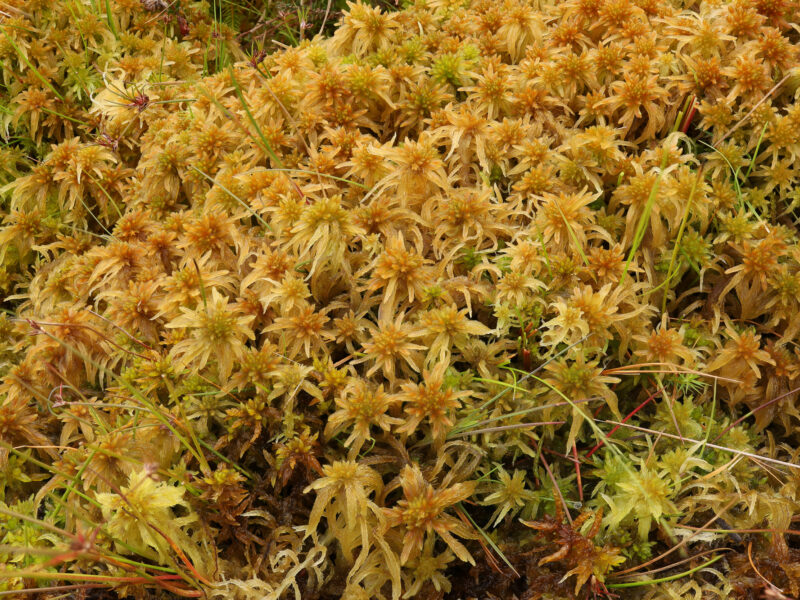Identification notes
You’ll need to be sploshing around in a base-rich flush or fen habitat to find Sphagnum teres, one of a suite of uncommon bryological indicators of high pH and low nutrient status. It often grows with S. contortum, S. subsecundum and/or S. inundatum.
It’s also, fortunately, one of a small and select group of Sphagnum species that nearly always have a prominent bud in the middle of the shoot’s capitulum, and this is a really useful character in the field to help pin down its identity. Other species with prominent buds include S. fimbriatum, S. girgensohnii and three rarities: S. riparium, S. lindbergii and S. platyphyllum. Although it doesn’t look much like it, S. teres is closely related to S. squarrosum, which also has a central bud albeit not a particularly prominent one. The two species are united in Sphagnum Section Squarrosa in having large, lingulate stem leaves without fibrils, no traces of red pigment and numerous large and conspicuous pores in the middle of the branch leaves. They both form ‘lawns’ rather than hummocks.
When growing in a well-lit situation, S. teres is normally characteristically ginger-coloured, or two-tone ginger and green. As with other Sphagnum species, though, beware shade forms. Plants growing in woodland or shaded by rushes or other tall plants often lack orange pigment and will be green. Such plants generally need to be identified microscopically.
Read the Field Guide account
















